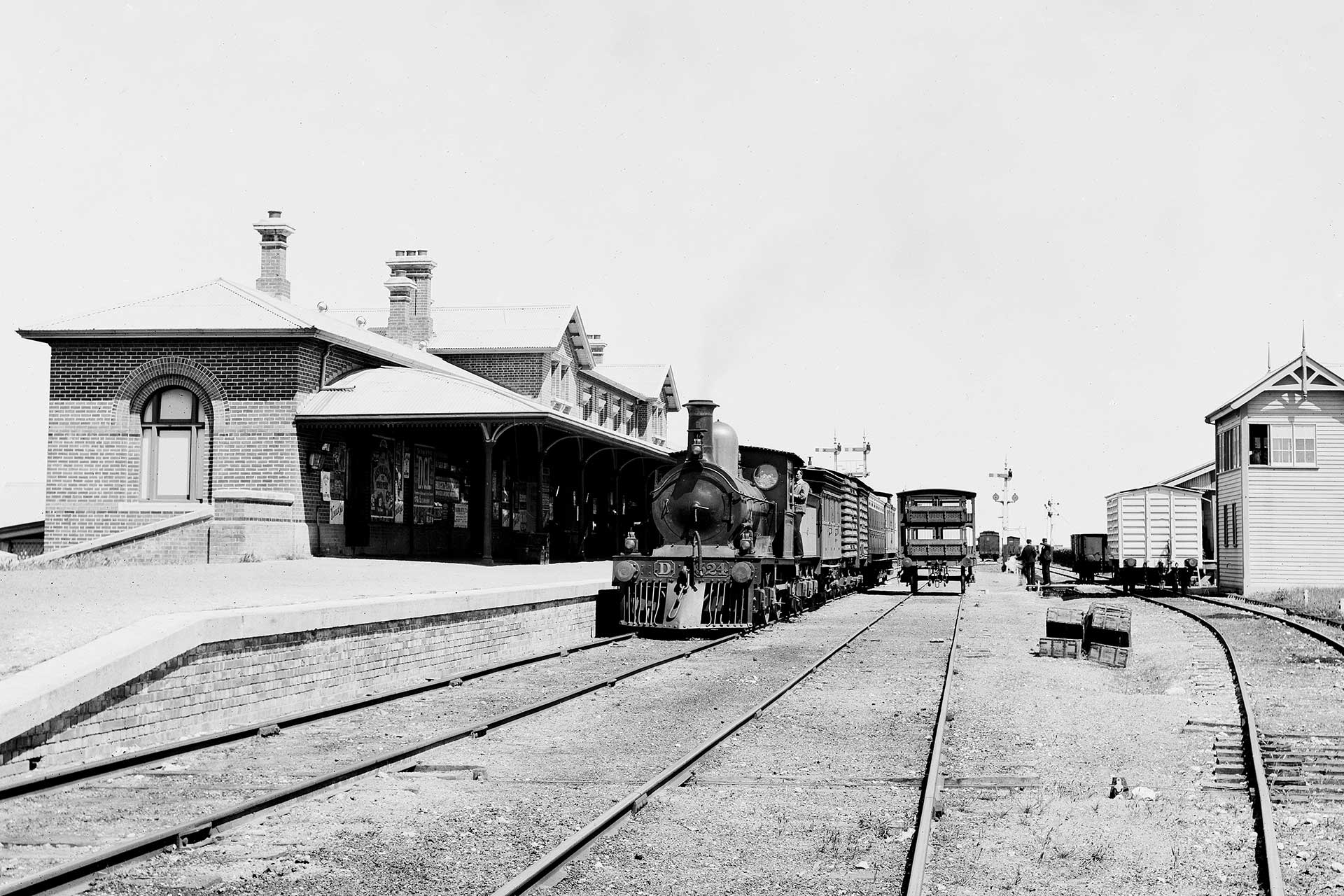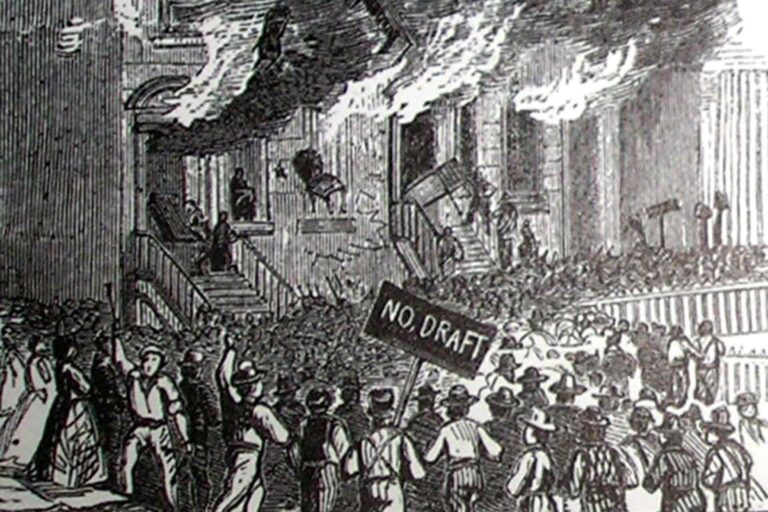The Great Gold Robbery Train Heist: Crime of the Century
One may wonder how a heist in Victorian Britain managed to send the country into a moral panic and generate a flurry of headlines across the nation. In May 1855, however, a gang of thieves pulled off one of the most audacious robberies in Britain’s railway history, stealing over £12,000 in gold from a train on the South Eastern Railway. The spectacular planning, audacity and public outrage that surrounded the case would ultimately lead to the heist becoming known as “Crime of the Century”, a tag it still retains in historical retellings of the story to this day.
In this article we’ll dig into all aspects of the heist, from the plans of its architects to the meticulous nature of the crime’s execution. We’ll also detail how the Great Gold Robbery was uncovered, the investigation that ensued and the impact it had on the railway system.
Victorian Britain and the Gold Transport System
The latter half of the 1800s saw Britain at the height of her economic and imperial powers. The frequent and large-scale shipments of gold between London and Paris were a common practice of the time to support both commercial trade and government reserves. Gold bullion being carried between the two countries was moved in bulk by many financial institutions, including the Bank of England and Rothschild & Sons, and trusted long-established shipping routes to move millions of pounds in gold across the English Channel in a matter of hours, with minimal exposure.
Shipments were typically received from these institutions at the South Eastern Railway’s London Bridge Station. The gold was transported by rail to the port of Folkestone, where the bullion was sealed and loaded on steam packets to Boulogne. It would be then transferred by road to Paris, where bank representatives met it. This route was the most direct and hence quickest, and was the most popular with senders requiring urgent shipment.
Security was more by rote and trust than by modern standards. Gold shipments from the Bank of England and Rothschild’s were packed into sealed wooden boxes inside iron safes which were kept in the guard van of the train. Each safe was secured with multiple locks, and the keys were entrusted to a select group of railway and shipping employees. The assumption at the time was that it would be too difficult, even for a single person in the chain of custody to steal such a shipment.
The various security measures were not bullet-proof, and had weaknesses which included duplication of keys, seals, and the safes were never kept under constant guard. Guards could be, and often were, left in separate compartments from the safes during transit. The job would have been made easier by the fact that the procedures were well-known and the staff mostly well-trusted.
All the ingredients were in place for a well-planned and executed criminal activity of a serious and organised nature. The Great Gold Robbery of 1855 demonstrated that no shipment was entirely safe from thieves in the Victorian era.

The Masterminds and the Plan
The robbery was the work of a network. The crime’s mastermind was the reputable railway employee William Pierce, who could use his position to learn about the gold shipments’ schedules and which train was carrying which items. His partner in crime was the habitual thief Edward Agar, and they were assisted by railway guard James Burgess, as well as William Tester, who had a position in the South Eastern Railway’s London terminus.
Burgess and Tester could also use their inside knowledge of the railway and shipping businesses to alert Pierce and Agar to any changes to the schedule of gold shipments. Fanny Kay, Agar’s mistress, was a known confidant, and James Townshend Saward, an ex-housebreaker known as “Jem the Penman”, was a talented forger who could launder the stolen bullion and reintroduce it to the gold market.
Essential to the plan was information as to the precise schedule of the shipments, the methods used to pack the bullion, and the security measures taken by the guards who travelled with it. Burgess’s work as a railway guard allowed for tampering with the access to the safes during transit, and Tester allowed the group to be notified in advance of any changes in the shipment’s schedule, which was variable. Armed with the exact information, the group was able to plan and prepare with a degree of accuracy that bordered on military. The next step in their plan was to ensure that they would be able to open the safes, as only railway staff had the access codes.
To that end, duplicate keys had to be made. Burgess and Tester were responsible for the originals, and they organised them to be temporarily removed from secure storage as part of their regular duties. Agar took the keys to a professional locksmith, who made wax impressions of them before returning the originals on the same day. Metal duplicates were made from the wax moulds and were made to be exact replicas of the originals, capable of opening the safes without leaving a trace. The gang would therefore be able to unlock the safes, using the keys, as if they were railway employees with legitimate access to them.
Practice and preparation were another part of the plan. Agar and Pierce were familiar with the weight of the gold shipments and rehearsed the robbery with dummy boxes that were exactly the same size and weight as the gold being carried. Timing was also important. The work had to be done during a specific part of the journey, during which the safes were unguarded, and in which the robbers could empty the safe and refill it with lead shot.
The stolen gold was planned to be melted down and brought back into the market by Saward before it could be identified and stopped. As with all the elements of the crime, the team was fully prepared to deal with the stolen gold as it was delivered.

The Heist
May 15, 1855, was the day the plan that had been discussed and debated at the Angler’s Rest for months and years would be attempted. The train departed London Bridge Station with three boxes of gold bound for Paris, each deposited into safes within the guard’s van. Edward Agar and William Pierce were on board as first-class passengers. The keys to open the safes were hidden in their luggage, with each man possessing a duplicate. The inside man, James Burgess, was the guard on duty and had confirmed that the safes would be left unattended for a period during the journey from London to Folkestone.
Agar and Pierce acted quickly when the other guards were out of sight. The safes were opened with the duplicate keys, and the three heavy boxes were removed. The loose gold bars and coins were each taken out and replaced with bags of lead shot of similar weight. The boxes were then resealed and relocked in the safes. The train continued its journey to Folkestone, where the boxes were loaded onto a steamer to Boulogne. By the time the loss of the gold was discovered in France, the real bullion was many miles away from any railway authority and would prove a cold trail.
On leaving the train, the gold was passed on to other accomplices, and the disposal of the bullion was overseen by James Townshend Saward, better known as “Jem the Penman”. Large quantities of the gold were melted down to disguise their source, and some of the gold coins were passed into circulation by a series of exchanges with confederates. Once in circulation, the coins could be converted into cash in the future.
Every step of the handover and the disposal had been carefully choreographed and reflected the planning that had taken place over the years. Each of the conspirators knew their part to play, and each movement of the gold had been pre-planned and double-checked. At this point, it seemed that the robbery had been a complete success and that the culprits had got away with it. However, in this perfect plan, there were tiny errors that would snowball into a complete collapse.

Discovery and Investigation
The absence of the gold was not discovered until the shipment arrived in Boulogne, France on 16 May 1855. On opening the cases they were found to contain bags of lead shot rather than bullion. The weight was not short, and it was surmised that the loss of gold had gone undetected during earlier handling. The theft was communicated immediately to London by telegraph, and a horrified railway company, Bank of England, and London law enforcement got to work.
Initial theories that the gold had been stolen in a foreign country and after it left England were dropped after discovery that the safes had been opened with their own keys. Attention focused on staff who would have had access to the keys or prior knowledge of the transport of the gold, for example, railway employees who knew the timings of each leg of the journey.
Scotland Yard took over the investigation. Their best detectives were sent to Boulogne and the coasts of England and Scotland. Reviewing the journey of the gold and questioning the railway workers, they were able to reduce the field of suspects. The major breakthrough was the discovery that James Burgess, the guard on the train carrying the gold, had known criminal associates. The connections made it clear that Burgess had lived beyond his means, and a surveillance team and informants established that William Pierce and Edward Agar were also enjoying unearned riches.
The case was progressing well and Scotland Yard was close to identifying suspects when Agar was arrested for another crime and sentenced to fourteen years imprisonment. Agar made a deal to confess to the crime in return for a more lenient sentence. Agar’s detailed account of the conspiracy led from the duplicating of the keys to the substitution of the lead shot. He named Pierce, Burgess, William Tester, and the forger James Townshend Saward as the conspirators, and there was no doubt but that they had committed the crime.
Betrayal by Agar was the downfall of the gang. As soon as the general substance of Agar’s evidence was made public, the other members of the gang were arrested. Scotland Yard recovered only a third of the stolen gold, but the testimony of Agar and the other suspects was enough for a conviction. The recovery and investigation was a public relations triumph for Victorian police, showing that although such a major crime could still shock the nation, modern policing was becoming professional enough to deal with the criminal fraternity.

The Trials and Sentences
The trial of the Great Gold Robbery conspirators commenced in January 1857 at the Old Bailey. The proceedings were met with immense public interest, with throngs of spectators outside the court building waiting for each day’s revelations of a crime that had captured the national imagination. Detailed newspaper reports were fed to an eager public, the pages of which contained as many lurid descriptions of the defendants as they did of the audacious crime itself. William Pierce, the charming ringleader, and James Townshend Saward, the gentlemanly “Penman”, were as enthralling to readers as the theft.
In opening the case, the prosecution called upon Edward Agar to take the stand and recount his confession to the theft. Agar’s evidence established the full extent of the plan, with witnesses from both the South Eastern Railway and the Bank of England helping to verify the chain of custody of the gold and the evidence — duplicate keys and otherwise — pointing to the defendants’ guilt. Agar was impugned in the defense case as an untrustworthy rogue trying to save his own skin. His story, however, held up under cross-examination.
The jury ultimately found Pierce, Burgess, and Tester guilty of stealing over £12,000 in gold from the Bank of England, worth millions in today’s money. The judge sentenced Pierce and Burgess to transportation for life to Australia, with Tester receiving 14 years in recognition of his lesser role in the crime. James Townshend Saward was acquitted of the robbery itself but was later jailed for unrelated fraud convictions.
The trial’s verdicts were met with a mixed reception. Most Victorians responded favorably, regarding the outcome as evidence that no matter how clever a scheme was, the perpetrators would still be brought to justice. Others were transfixed by how close the robbers had come to success, positing that without Agar’s betrayal, the crime may have remained unsolved. The sentences, while harsh, were deemed a necessary deterrent against crimes targeting the national commerce.
Press coverage of the trial would feed a growing Victorian public fascination with criminal masterminds. Accounts of the Great Gold Robbery were retold in pamphlets, penny dreadfuls, and serialized newspaper features, with the telling often veering into fiction. By the time the trial wrapped, the Great Gold Robbery had secured its place as one of the most well-known (and brazen) crimes of the century.
Impact and Legacy
The aftermath of The Great Gold Robbery extended beyond the immediate responses of the authorities and the media. It had a significant and long-term impact on railway security and operations in Britain. The swift overhaul of procedures and the introduction of more rigorous safeguards for the transportation of valuable goods became the immediate response from railway companies and banks.
This included the use of more robust safes, tamper-proof seals, and stricter supervision of employees who handled or had access to valuable cargo. One of the procedural changes was implemented by the South Eastern Railway (SER), which aimed to prevent the same individual from being in charge of both the loading process and the documentation, effectively closing the loophole that had been so crucial to the original plan.
The robbery also served as a model for future criminal endeavors, not only in Britain but around the world. The elements of inside knowledge, meticulous planning, and the need for precise timing and teamwork became a blueprint for subsequent train robberies. The notion that the railways, which were then the icons of modernity and progress, could also represent a concentration of financial wealth for those bold enough to take it, was a powerful one. Even decades later, when similar crimes occurred, such as the Great Train Robbery of 1963, there were inevitable comparisons to Pierce and his gang.

Culturally, the Great Gold Robbery found a place in the Victorian imagination. Writers and journalists of the time were captivated by the story, which offered a perfect blend of suspense, ingenuity, and moral tension. Over the years, it became a staple of crime literature, with fictionalized accounts appearing in novels and short stories, blurring the lines between fact and fiction.
In the 20th century, the story was adapted for films and television, with several dramatizations and documentaries retelling the tale for new audiences. Michael Crichton’s 1975 novel The Great Train Robbery and its film adaptation, although fictionalized and inspired by later events, were also heavily influenced by the 1855 heist, bringing the story to an even wider audience.
Conclusion
The Great Gold Robbery has remained one of the most brazen and well-planned crimes of the Victorian era. Achieving success would have required patience, in-depth knowledge and level of coordination that could easily be seen in fiction, not reality. The public fascination back then – and since – is a product of the robbers managing to invade trusted places, fool security and outsmart the era that cared for progress and order.
In terms of high-profile robberies, it remains on the list of the most famous. It is there not only due to the value of the loot, but because of the criminal efficiency of the whole operation. Even having failed, as all of the conspirators were caught, it does not stop being a robbery to remember. The possibility of a perfectly planned and almost perfectly executed crime has always had a strong effect on people.










